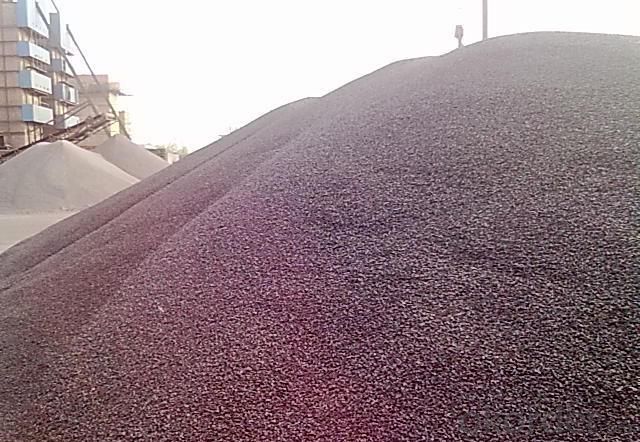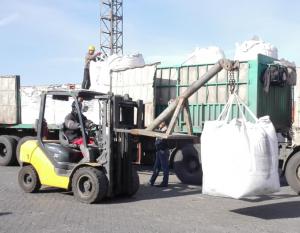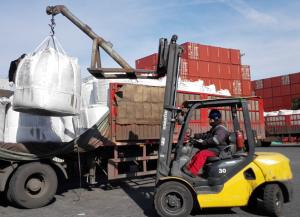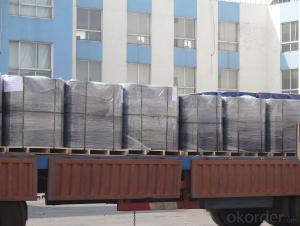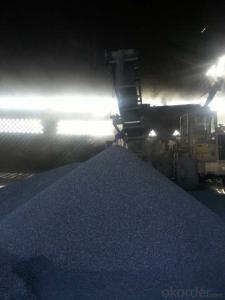FC95 Injection Coke/FC 95% CNBM China Product
- Loading Port:
- Tianjin
- Payment Terms:
- TT OR LC
- Min Order Qty:
- 0 m.t.
- Supply Capability:
- 100000 m.t./month
OKorder Service Pledge
OKorder Financial Service
You Might Also Like
Feature
All of our goods are made in the best quality of world famous Tianjin. All of our products are with High carbon, Low ash, low sulphur, Low Moisture.
Application
The Calcined Anthracite Coal/Gas Calcined Anthracite Coal/Carbon Raiser is mainly used in steelmaking in electrical stove, screening water, shipbuilding sandblast to remove rust. It can reduce the cost of steelmaking effectively by replacing the traditional petroleum coke of carburant.Also can improve the Carbon content in steel-melting and Ductile iron foundry.
Packaging & Delivery
| Packaging Detail: | 25kgs/50kgs/1ton per bag or as buyer's request |
| Delivery Detail: | Within 20 days after receiving corect L/C |
Specifications
Calcined Anthracite
Fixed carbon: 90%-95%
S: 0.5% max
Size: 0-3. 3-5.3-15 or as request
General Specification of Calcined Anthracite:
PARAMETER UNIT GUARANTEE VALUE | |||||
F.C.% | 95MIN | 94MIN | 93MIN | 92MIN | 90MIN |
ASH % | 4MAX | 5MAX | 6MAX | 7MAX | 8MAX |
V.M.% | 1 MAX | 1MAX | 1.5MAX | 1.5MAX | 1.5MAX |
SULFUR % | 0.5MAX | 0.5MAX | 0.5MAX | 0.5MAX | 0.5MAX |
MOISTURE % | 0.5MAX | 0.5MAX | 0.5MAX | 0.5MAX | 0.5MAX |
Size can be adjusted based on buyer's request.
Pictures of Calcined Anthracite:
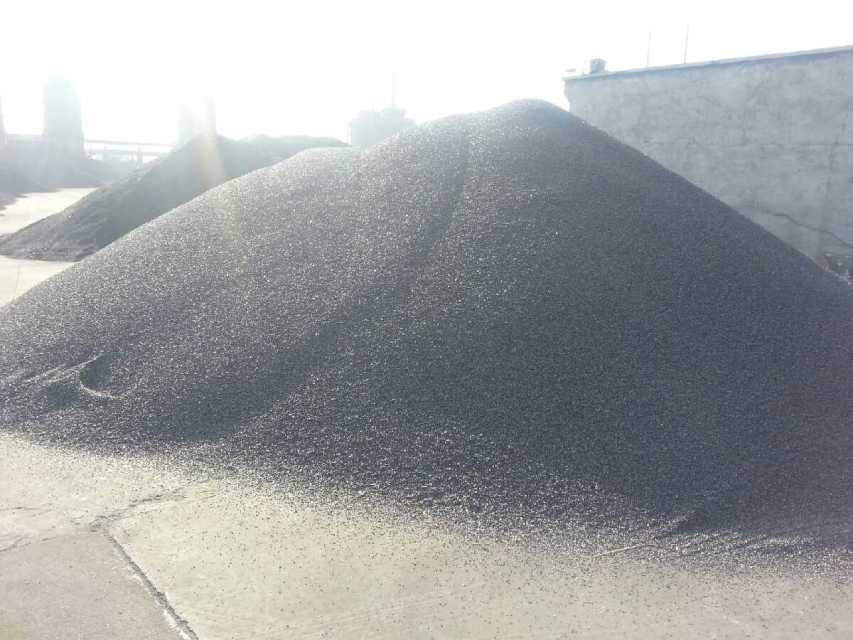

- Q: What is the greenhouse effect of carbon dioxide?
- The process known as the greenhouse effect is caused by carbon dioxide and other greenhouse gases in the Earth's atmosphere. These gases act like a blanket, allowing sunlight to pass through while trapping the heat that is reflected back from the Earth's surface. In essence, they absorb and re-emit some of the energy that the Earth re-radiates into space, preventing it from escaping. This natural process is essential for maintaining a livable temperature on Earth. It warms the land, oceans, and atmosphere when sunlight reaches the surface. However, human activities, particularly the burning of fossil fuels, have significantly increased the concentration of carbon dioxide and other greenhouse gases. As a result, the greenhouse effect has been intensified, leading to global warming or climate change. The higher levels of carbon dioxide in the atmosphere cause more heat to be trapped, amplifying the natural warming process. This has various consequences, including rising sea levels, more frequent and severe extreme weather events, changes in precipitation patterns, and disruptions to ecosystems and biodiversity. To mitigate the impacts of climate change, it is crucial to address the greenhouse effect of carbon dioxide and reduce greenhouse gas emissions. Transitioning to renewable energy sources, improving energy efficiency, and promoting sustainable practices are key strategies in reducing carbon dioxide emissions and combating global warming.
- Q: How does carbon contribute to the strength of composite materials?
- Carbon contributes to the strength of composite materials through its exceptional stiffness and high tensile strength properties. When carbon fibers are embedded in a matrix material, such as a polymer resin, they provide reinforcement and help distribute loads evenly throughout the composite. This reinforcement enhances the overall strength, durability, and resistance to deformation of the composite material, making it ideal for various applications in aerospace, automotive, and construction industries.
- Q: What are carbon-based superconductors?
- Carbon-based superconductors are a type of material that exhibit superconductivity, a phenomenon where electrical resistance drops to zero at low temperatures. Unlike conventional superconductors, which are typically metallic elements or alloys, carbon-based superconductors are composed primarily of carbon atoms. These materials are known for their unique structure and properties, which make them highly efficient conductors of electricity when cooled below a certain critical temperature. Carbon-based superconductors can be categorized into two main types: organic superconductors and fullerene superconductors. Organic superconductors are made up of carbon-based molecules, such as organic salts or polymers, which form a crystal lattice structure. These materials have been extensively studied and have shown promising superconducting properties at low temperatures. Fullerene superconductors, on the other hand, are composed of carbon molecules arranged in a specific cage-like structure, called fullerenes. The most well-known fullerene is C60, also known as a buckyball, which consists of 60 carbon atoms arranged in a soccer ball-like shape. By doping these fullerene cages with certain elements, such as alkali metals or transition metals, their superconducting properties can be enhanced. What makes carbon-based superconductors particularly interesting is their potential for high-temperature superconductivity. While most conventional superconductors require extremely low temperatures close to absolute zero (-273.15°C or -459.67°F) to exhibit superconductivity, some carbon-based superconductors have been found to retain their superconducting properties at relatively higher temperatures. This property is crucial for practical applications, as it allows for easier cooling and opens up possibilities for widespread use of superconductivity in various fields, including energy transmission, magnetic levitation, and quantum computing. However, it is important to note that carbon-based superconductors are still an active area of research, and many challenges remain in understanding their mechanisms and improving their superconducting properties. Nonetheless, the discovery and exploration of these materials hold great promise for advancing the field of superconductivity and enabling new technological breakthroughs.
- Q: What is the structure of carbon-based polymers?
- The structure of carbon-based polymers is characterized by a chain-like arrangement of carbon atoms, forming the backbone of the polymer. These carbon atoms are typically bonded to other atoms or groups of atoms, such as hydrogen, oxygen, nitrogen, or halogens, through covalent bonds. The properties of the polymer are determined by the arrangement and connectivity of these atoms. In addition to the carbon backbone, functional groups are often present in carbon-based polymers. These functional groups are specific combinations of atoms that can give the polymer unique chemical properties. They can be attached to different points along the carbon backbone, adding chemical diversity and altering the behavior of the polymer. The monomers, which are the repeating units in carbon-based polymers, can vary in size and complexity. For instance, simple hydrocarbons like ethylene can undergo polymerization to form polyethylene, which consists of a long chain of carbon atoms with attached hydrogen atoms. On the other hand, more complex monomers like acrylonitrile or styrene can be utilized to produce polymers like polyacrylonitrile or polystyrene, respectively. These polymers incorporate additional atoms or functional groups, resulting in distinct properties and applications. In conclusion, carbon-based polymers possess a diverse structure that can be customized to fulfill specific requirements. This versatility allows them to be utilized in a wide array of industries, including plastics, textiles, and electronics.
- Q: How do you use carbon fourteen to measure the age?
- One is obvious a small amount of sample, only 1 ~ 5 mg samples can be, such as a piece of fabric, bone chips, toner trace of ancient ceramics in the surface or pores can be measured; while the conventional carbon - 14 dating rules 1 to 5 grams of samples differ by 3 orders of magnitude. The two is high sensitivity. The sensitivity of 10-15 to 10-16 isotope ratio measurement; while the conventional carbon - 14 dating rules with a difference of 5 to 7 orders of magnitude. Three is a short measurement time, measurement of modern carbon to reach 1% accuracy, only 10 to 20 minutes; while the conventional carbon - 14 dating is 12 ~ 20 hours. It is due to carbon - 14 accelerator mass spectrometry dating method has the advantage, since its inception, has been paid attention to by archaeologists, paleontologists and geologists, and is widely used. It can be said that within 50000 years of cultural relics on the determination of samples, carbon - 14 accelerator mass spectrometry dating method is determined the accuracy of a maximum of 1. carbon. 14 is a radioactive isotope of carbon, was found in 1940. It is produced by cosmic rays collide with a nitrogen atom in the air, which has a half-life of about 5730 years, as the decay of beta decay, 14 atoms into carbon nitrogen atoms.
- Q: What are the impacts of carbon emissions on the stability of permafrost?
- Carbon emissions have a significant impact on the stability of permafrost, which is the layer of soil, sediment, and rock that remains frozen for at least two consecutive years. This frozen layer covers vast areas in the Arctic, subarctic regions, and high-altitude mountain ranges. One of the main consequences of carbon emissions on permafrost stability is the acceleration of climate change. The emission of carbon dioxide (CO2) and other greenhouse gases traps heat in the atmosphere, resulting in global warming. As temperatures increase, permafrost begins to thaw, leading to various negative outcomes. Thawing permafrost releases a substantial amount of stored carbon into the atmosphere. This carbon was previously locked in frozen organic matter, such as dead plants and animals, which accumulated over thousands of years. When permafrost thaws, microbes decompose this organic matter and release greenhouse gases like carbon dioxide and methane. These emissions create a positive feedback loop, exacerbating climate change and causing further permafrost thawing. The release of carbon from thawing permafrost contributes to the overall rise in atmospheric greenhouse gas concentrations. This, in turn, amplifies global warming and global climate change. The consequences are not confined to the Arctic; they impact the entire planet. Rising temperatures, sea-level rise, extreme weather events, and disruptions to ecosystems are among the results of global climate change. Permafrost thaw also affects infrastructure and human settlements in the Arctic and subarctic regions. Buildings, roads, pipelines, and other infrastructure constructed on permafrost can become unstable as the ground beneath them softens. This instability can lead to structural damage and economic losses. Furthermore, communities that rely on permafrost for traditional activities like hunting, fishing, and transportation face challenges due to the changing landscape. The impacts of carbon emissions on permafrost stability extend beyond local areas and have global implications. The release of stored carbon from permafrost contributes to climate change, which has far-reaching consequences for ecosystems, economies, and societies worldwide. It is crucial to decrease carbon emissions and mitigate climate change to preserve permafrost and its essential role in the Earth's climate system.
- Q: How does carbon impact the availability of freshwater resources?
- The availability of freshwater resources is impacted by carbon in several interconnected ways. Climate change is one of the primary means through which carbon affects freshwater availability. The burning of fossil fuels and other human activities result in increased levels of carbon dioxide in the atmosphere, which contributes to global warming. This warming, in turn, leads to changes in precipitation patterns, including alterations in rainfall distribution and intensity. The emission of carbon also leads to warmer temperatures, which can cause higher rates of evaporation and more frequent and severe droughts in specific regions. These droughts reduce the amount of water accessible for freshwater resources like rivers, lakes, and reservoirs. Furthermore, the shifting climate can disrupt natural water cycles, impacting the replenishment of groundwater aquifers, which are essential sources of freshwater. Moreover, the quality of freshwater resources is impacted by carbon. The increased carbon emissions reacting with atmospheric moisture result in acid rain, which acidifies freshwater bodies and renders them unsuitable for many aquatic organisms. This disruption to ecosystems can lead to the loss of species that depend on freshwater resources for their survival. Another manner in which carbon affects freshwater availability is through its influence on land use. The conversion of forests and wetlands into agricultural or urban areas releases carbon stored in vegetation and soil. This not only adds to carbon emissions but also diminishes the ability of natural ecosystems to retain and filter water. Forests, for instance, play a crucial role in maintaining the water cycle by absorbing rainfall and gradually releasing it into streams and groundwater. Deforestation disrupts this process and can result in reduced water availability downstream. In conclusion, carbon emissions have a profound impact on the availability of freshwater resources. Through climate change, carbon alters precipitation patterns, resulting in droughts and decreased water availability. It also affects the quality of freshwater through phenomena like acid rain. Moreover, land-use changes driven by carbon emissions can further diminish freshwater availability by disrupting natural water cycles.
- Q: How does carbon impact the productivity of marine ecosystems?
- Carbon impacts the productivity of marine ecosystems by influencing the growth and survival of primary producers, such as phytoplankton, which are the foundation of these ecosystems. Increased carbon dioxide levels can stimulate phytoplankton growth in some cases, but excessive amounts can lead to detrimental effects like ocean acidification. This can disrupt the delicate balance of marine ecosystems, affecting the availability of nutrients, food chains, and overall productivity.
- Q: How does carbon dioxide affect the pH of seawater?
- Carbon dioxide reacts with seawater to form carbonic acid, which lowers the pH of the water, making it more acidic. This process is known as ocean acidification and has significant impacts on marine life and ecosystems.
- Q: What are the economic impacts of carbon emissions?
- The economic impacts of carbon emissions are significant and wide-ranging. Carbon emissions, primarily from the burning of fossil fuels, contribute to climate change and global warming. These changes in the climate have a direct impact on various economic sectors and can lead to both short-term and long-term economic consequences. One of the most notable economic impacts of carbon emissions is the cost of dealing with the effects of climate change. Extreme weather events, such as hurricanes, floods, and droughts, become more frequent and intense as a result of carbon emissions. These events can cause extensive damage to infrastructure, homes, and businesses, leading to significant economic losses. For example, in 2017, the United States experienced a record-breaking hurricane season, with hurricanes Harvey, Irma, and Maria causing an estimated $265 billion in damages. Moreover, carbon emissions also affect agricultural productivity. Climate change alters temperature and precipitation patterns, which can disrupt crop production and decrease yields. This, in turn, affects food prices and availability, impacting both consumers and farmers. Additionally, carbon emissions contribute to the acidification of oceans, which can harm marine ecosystems and disrupt fisheries, leading to economic losses for fishing communities. Furthermore, carbon emissions have implications for public health, which can result in economic burdens. Air pollution caused by carbon emissions can lead to respiratory and cardiovascular illnesses, increasing healthcare costs and reducing workforce productivity. In addition, extreme heatwaves, exacerbated by carbon emissions, can have a detrimental impact on worker productivity and labor capacity, affecting economic output. To mitigate the economic impacts of carbon emissions, many countries have implemented policies and regulations to reduce greenhouse gas emissions. These policies often include carbon pricing mechanisms, such as carbon taxes or cap-and-trade systems, which aim to incentivize the transition to cleaner energy sources and reduce carbon emissions. While these policies may have short-term economic costs, they can also create opportunities for innovation and the development of green technologies, which can lead to long-term economic benefits. In conclusion, the economic impacts of carbon emissions are significant and multifaceted. From the costs of dealing with climate-related disasters to the effects on agriculture, public health, and productivity, carbon emissions have far-reaching consequences. Addressing these impacts through the implementation of effective climate policies is crucial to mitigate the economic risks and foster a sustainable and resilient economy.
Send your message to us
FC95 Injection Coke/FC 95% CNBM China Product
- Loading Port:
- Tianjin
- Payment Terms:
- TT OR LC
- Min Order Qty:
- 0 m.t.
- Supply Capability:
- 100000 m.t./month
OKorder Service Pledge
OKorder Financial Service
Similar products
Hot products
Hot Searches



